 |
|||||||||||||||
|
||
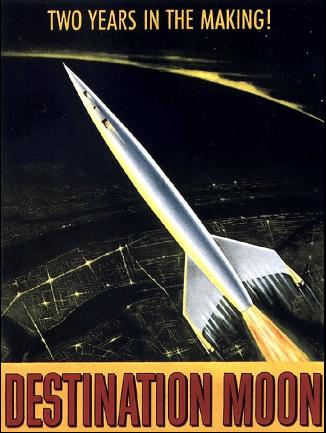 |
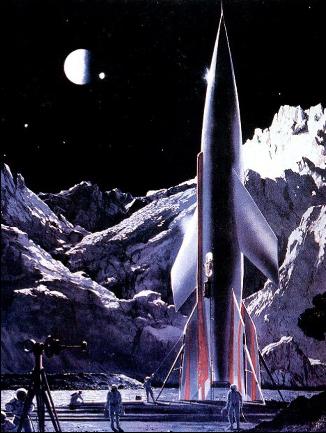 |
|||||||
The slick, silver spaceships envisioned in the 1950s in movies and art, compared to the reality of that era:
The hypersonic North American X-15 Rocket Plane. |
||||||||
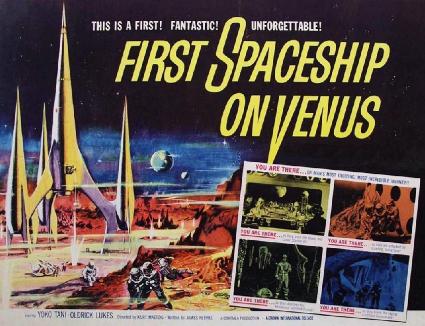 |
||||||||
— The Pilots of the X-15 Rocket Plane — |
||
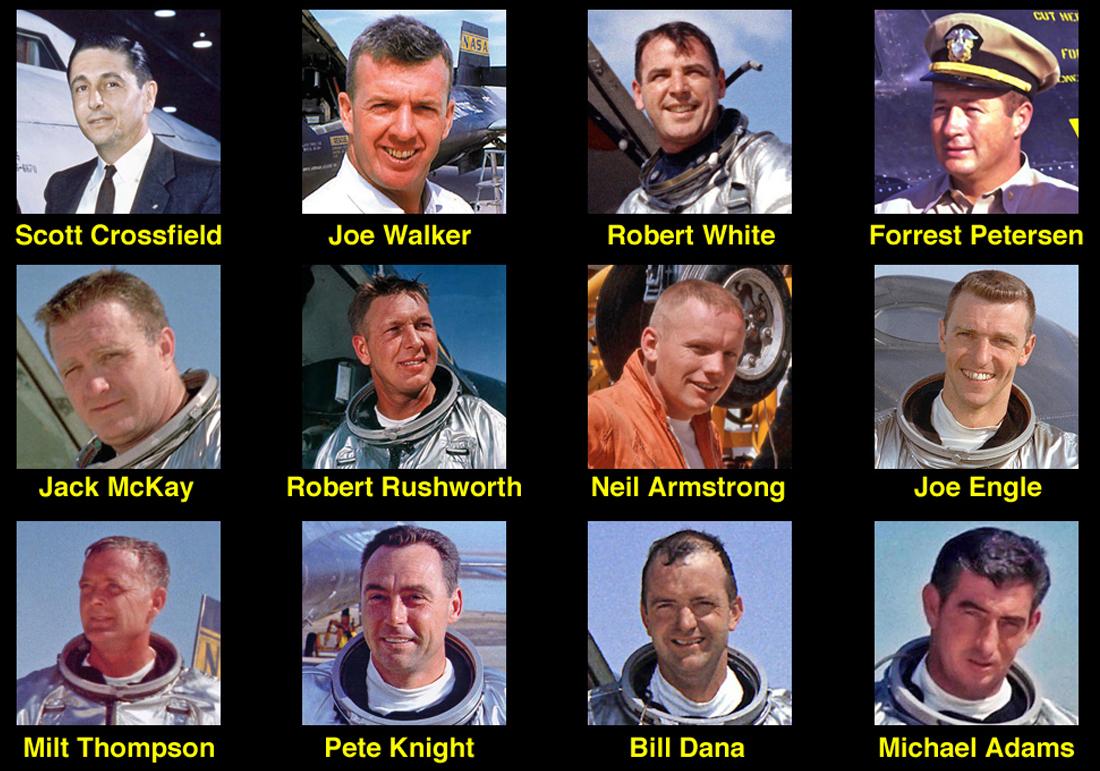 |
||
The X-15 Rocket Plane operated from 1959 to 1968. There were twelve pilots who flew the aircraft on 199 research flights. 1. Scott Crossfield, North American Aviation. 2. Joe Walker, NASA. 3. Robert White, US Air Force. 4. Forrest Petersen, US Navy. 5. Jack McKay, NASA. 6. Robert Rushworth, US Air Force. 7. Neil Armstrong, NASA. 8. Joe Engle, US Air Force. 9. Milt Thompson, NASA. 10. Pete Knight, US Air Force. 11. Bill Dana, NASA. 12. Michael Adams, US Air Force. Armstrong Flight Research Center |
||
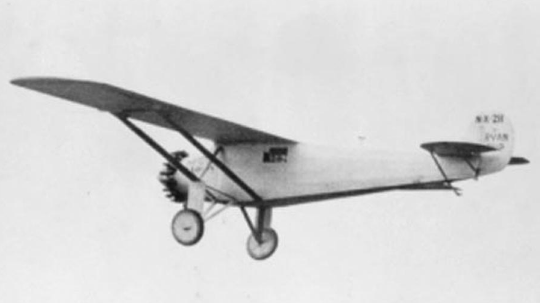 |
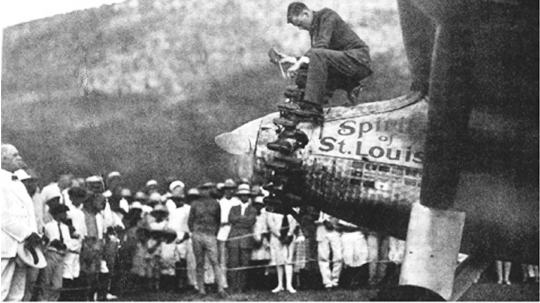 |
|||
The "Spirit of St. Louis" and Charles Lindbergh were an inspiration to Jack McKay. when "Lucky Lindy" landed on St. Thomas, VI on 31 Jan. 1928. Jack would go on to become the 5th pilot to fly the X-15. His twin brother Jim would become an aerospace engineer at NASA, working side-by-side with Jack. author's collection |
||
— The First Hypersonic Research Aircraft — |
||
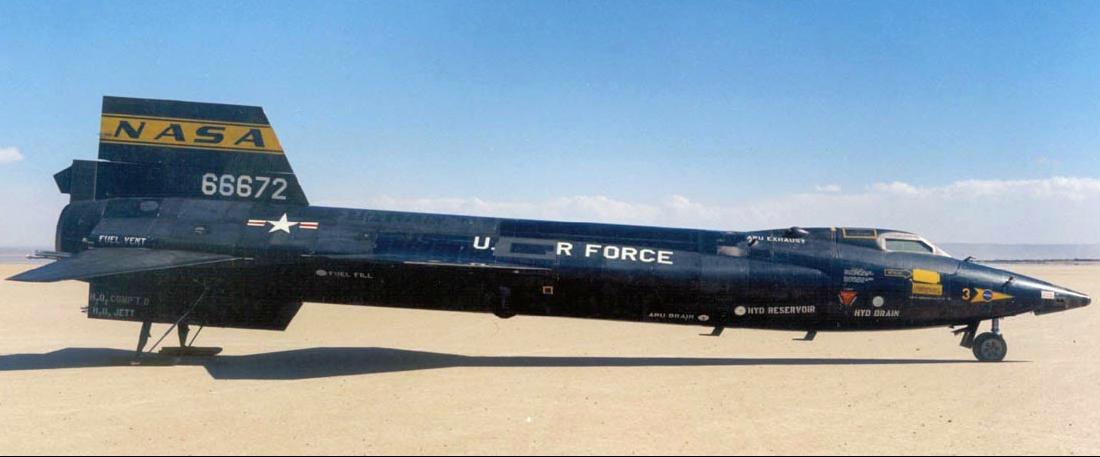 |
||
Three X-15s were built by North American Aviation for research by NASA, the US Air Force, and the US Navy. Armstrong Flight Research Center |
||
X-15 Mission Designations Each flight of the X-15 had a specific number assigned such as 1-70-119. To break this down, that means that X-15 no. 1 was carried aloft 119 times and this was the 70th actual launch. Other designations could use an A (Abort) or a C (Captive flight) such as 3-A-85. This signifies that X-15 no. 3 was carried aloft for the 85th time, but the mission was Aborted before launch. |
||
 |
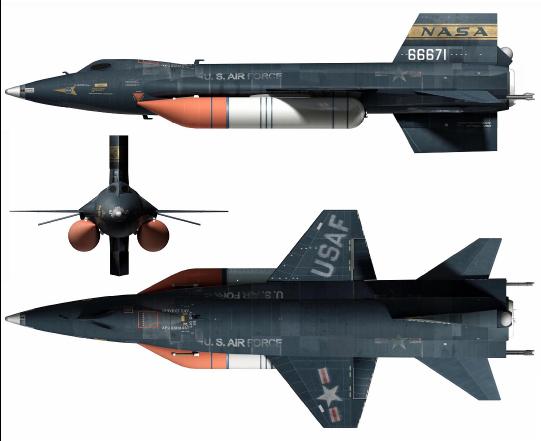 |
||||
3-view image of advanced X-15A-2 with the extended fuselage (section at the front edge of the wings) and external fuel tanks attached. computer art Thommy Eriksson |
|||||
3-view image of the original X-15. computer art Thommy Eriksson |
|||||
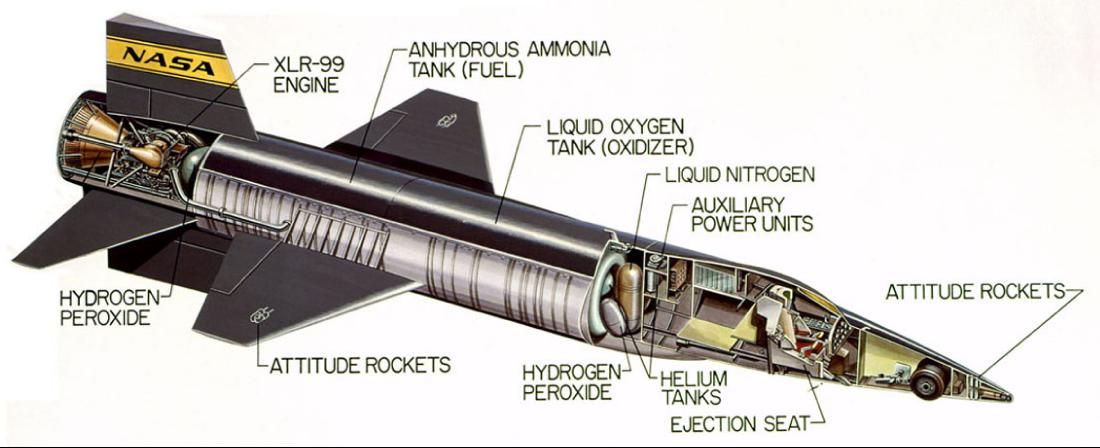 |
||
Cutaway view of the X-15 with major systems highlighted. North American Aviation |
||
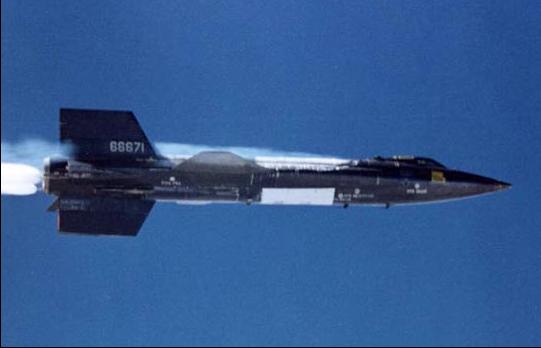 |
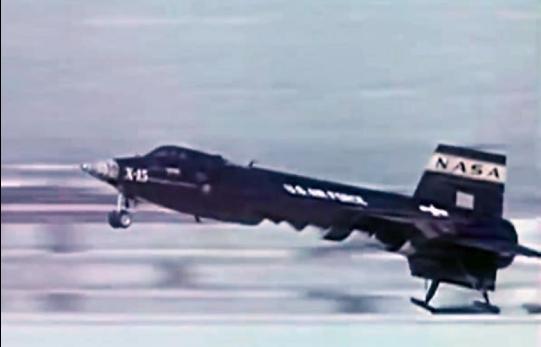 |
|||
The X-15 drops away from the B-52, and the rocket ignited, to start its mission. Armstrong Flight Research Center |
Touchdown after another successful hypersonic research flight. NASA Headquarters |
|||
 |
||
The X-15 (loaded on the B-52 mothership's wing) is next to a Curtis Pusher at an Edwards AFB air show. What a difference 50 years of flight research can make. author's collection |
||
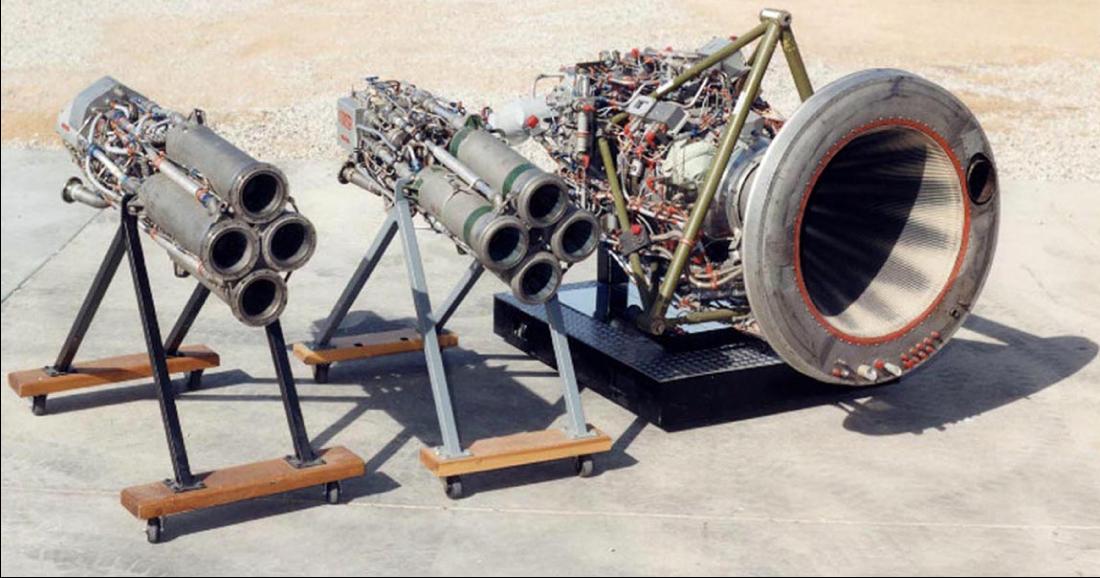 |
||
Comparison of the XLR-11 rocket engines to the XLR-99. It took two 4-chamber LR-11s stacked on top of each other to deliver 16,000 pounds of thrust to early X-15 flights. The LR-99 had nearly 60,000 pounds of thrust, and it was also capable of being throttled from 30 to 100 percent thrust. Both rocket engines were built by Reaction Motors. author's collection |
||
— Edwards AFB and the High Range — |
||
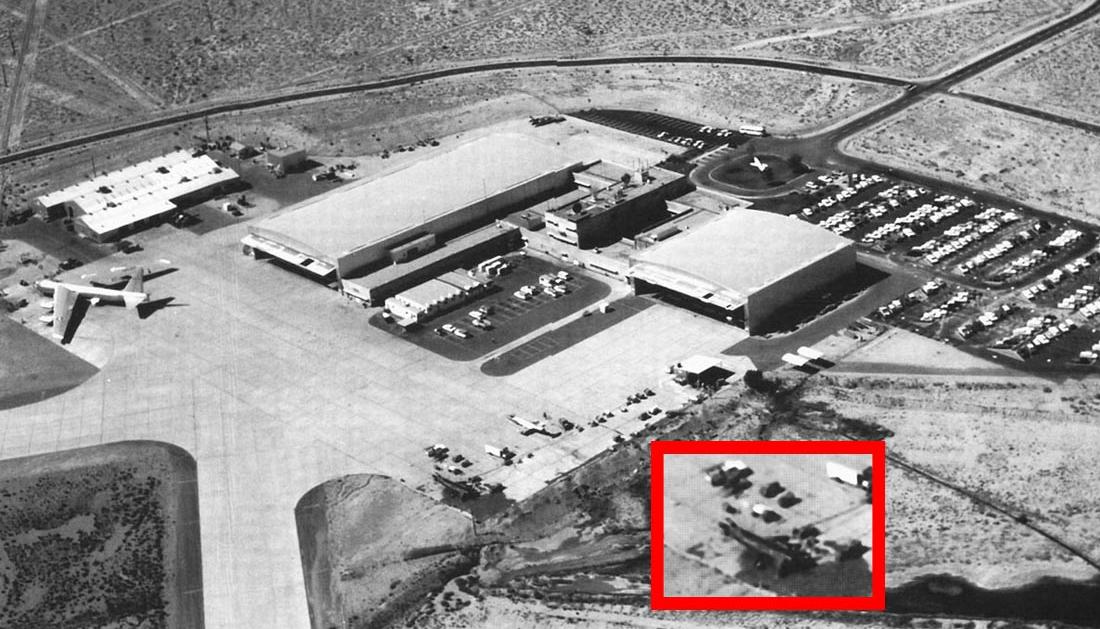 |
||
The Flight Research Center at Edwards Air Force Base in California's Mojave Desert. The entrance is at the upper right where an X-1E can be seen on a pedestal. The long hangar to the left was where the X-15s were maintained. Offices were between the two hangars. One of the two B-52 motherships can be seen parked at the left center, while an X-15 can be seen in its service area near the center bottom of the photo, and in the inset. Armstrong Flight Research Center |
||
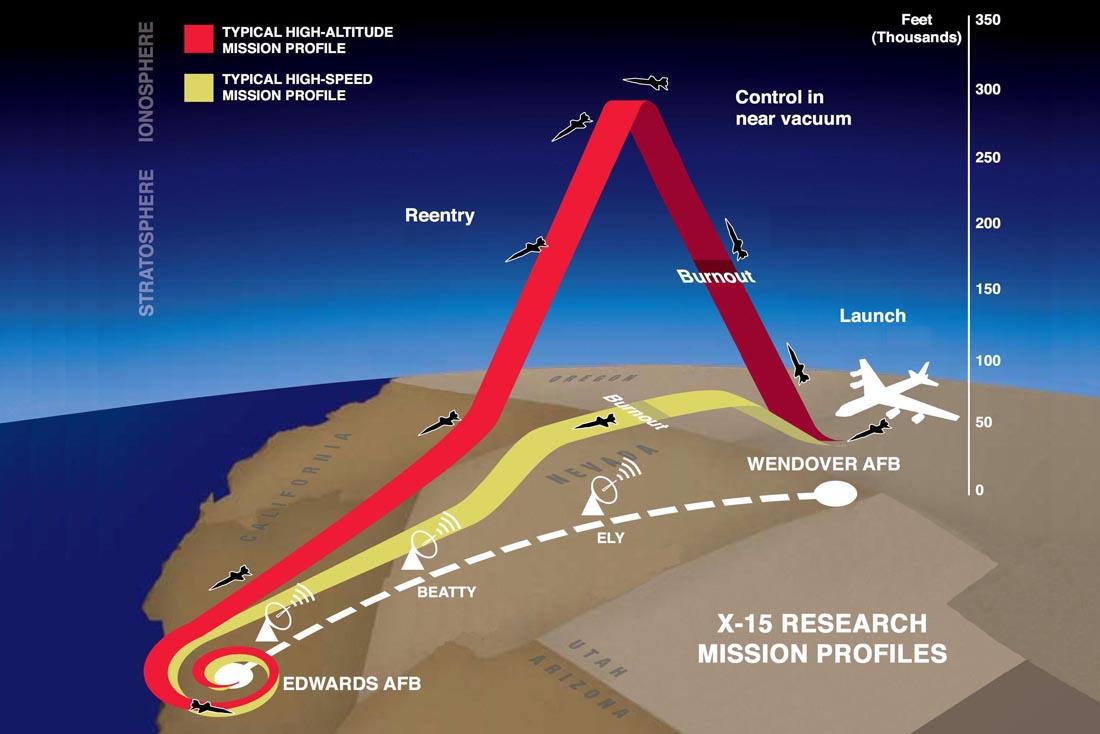 |
||
Artistic representation of X-15 flights along the High Range. The yellow band signifies lower altitude speed runs, and the red band the high altitude sub-orbital flights. author's collection and modified by author |
||
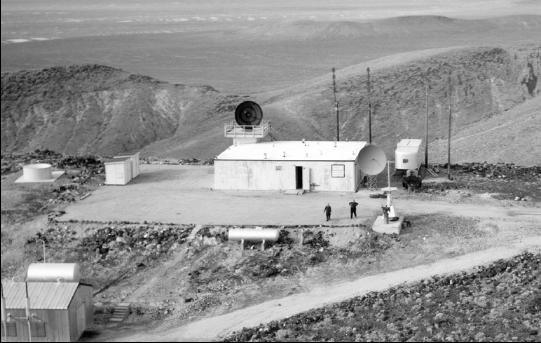 |
 |
|||
The High Range station outside Beatty, Nevada. author's collection |
The High Range station outside Ely, Nevada. author's collection |
|||
— The People Responsible for "The X-15 Rocket Plane, Flying the First Wings into Space" — |
||
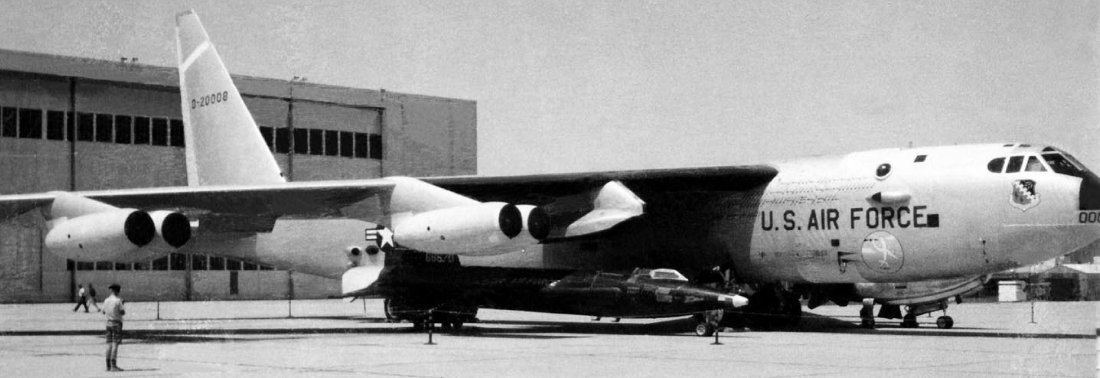 |
||
The book's author, Michelle Evans, at 11 years old (far left, under the B-52 wing). She is checking out X-15 no. 1 on display at Edwards AFB on 20 May 1967. Polaroid photo by author's father, R. Bryce Evans |
||
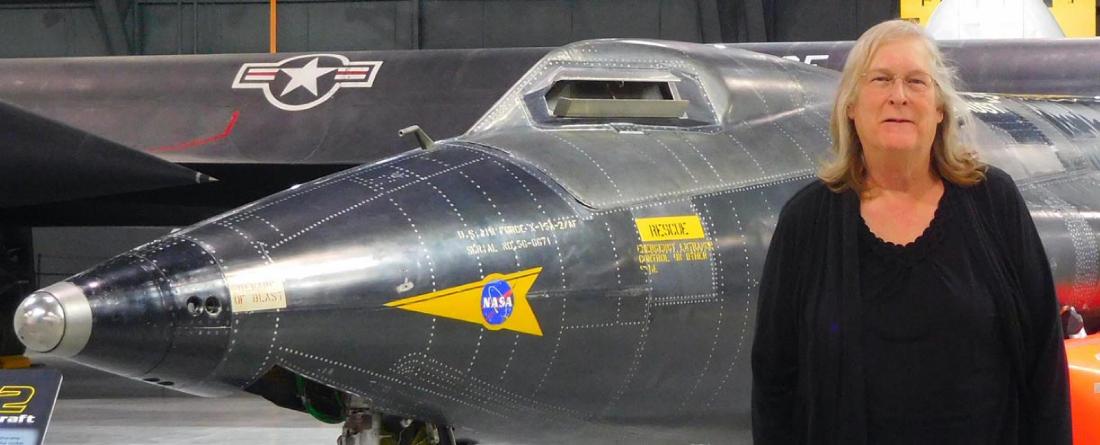 |
||
Michelle at the National Museum of the US Air Force in Dayton, Ohio. Behind her is the X-15A-2. photo by Lt. Col. Larry Hammond, USAF |
||
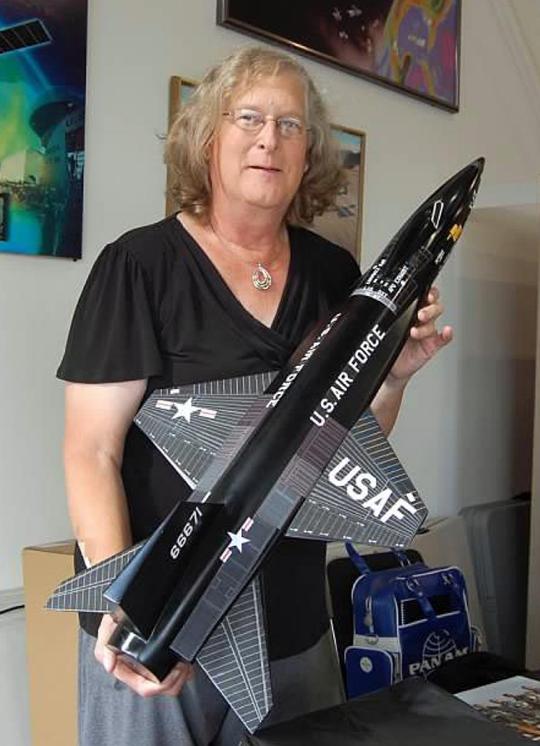 |
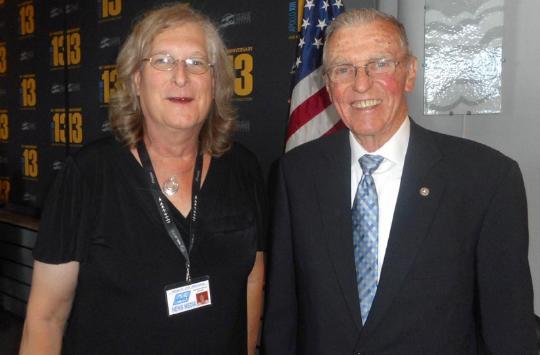 |
||||
Michelle with X-15 pilot Joe Engle. Joe wrote the Foreword to her book. photo by Francis French |
|||||
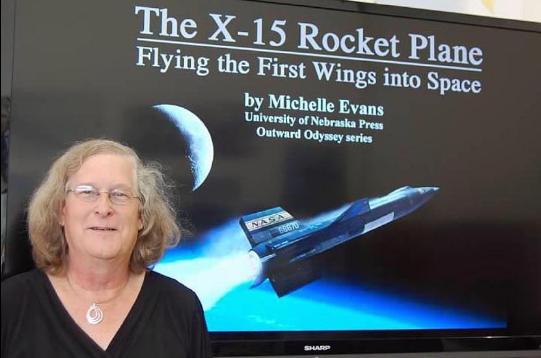 |
|||||
Michelle holds a 1/15th scale vintage X-15 model, first used in her display for the Western Museum of Flight, during her talk on 18 Oct. 2014. photo by Cynthia Macha |
|||||
Michelle starts a presentation based on her book. photo by Cynthia Macha |
|||||
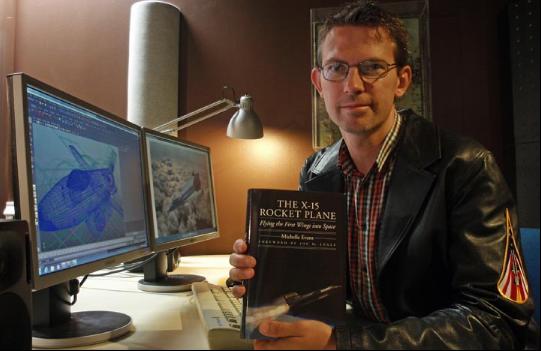 |
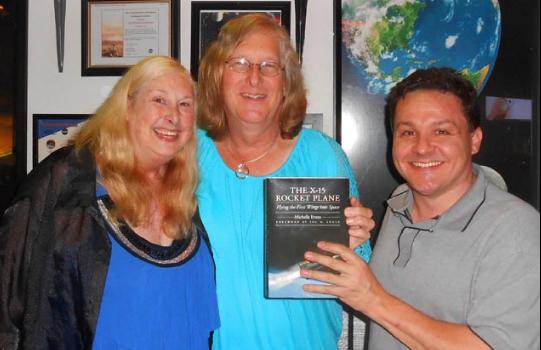 |
|||
Thommy Eriksson created the superb computer artwork used throughout the book, as well as the amazing and beautiful cover illustration. photo by Thommy Eriksson |
Cherie Rabideau and Michelle, with Francis French. Francis is responsible for Michelle's contract with the University of Nebraska Press for "The X-15 Rocket Plane." author's collection |
|||
— The B-52 Mothership to the X-15, and Support Aircraft — |
||
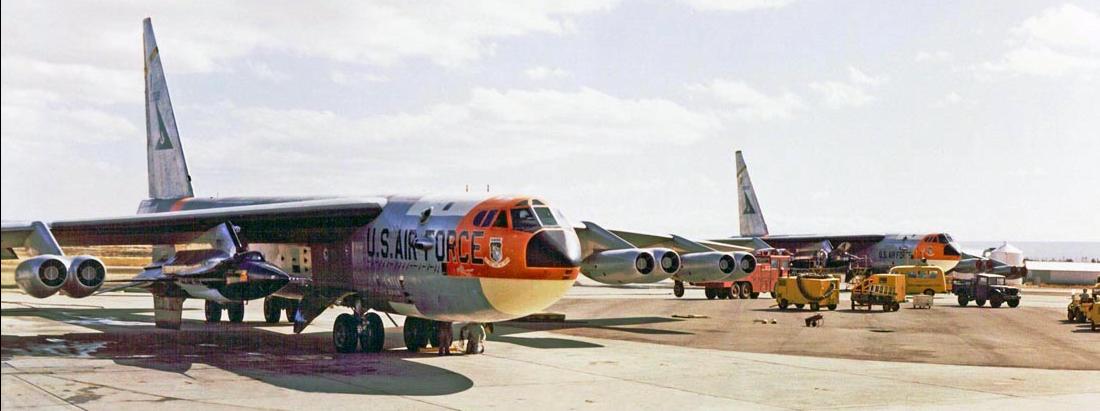 |
||
The B-52 Stratofortress was used as the carrier aircraft, or "mothership," for the three X-15s flown during the hypersonic research program. NB-52B no. 008 is in the foreground, with NB-52A no. 003 behind. North American Aviation |
||
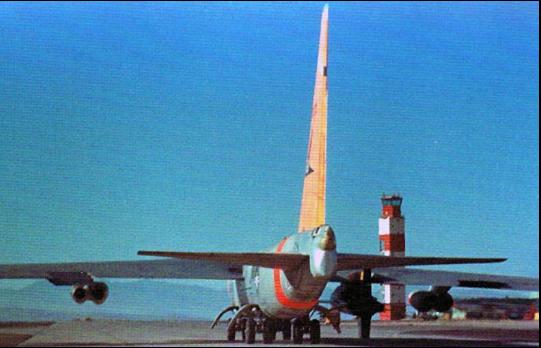 |
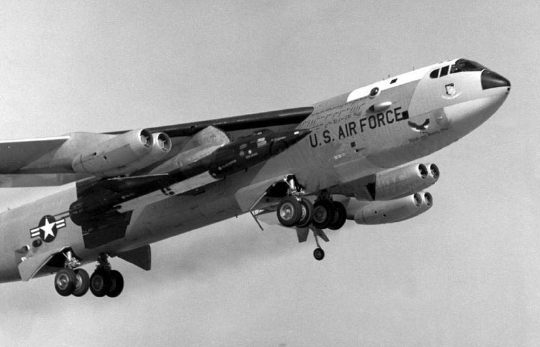 |
|||
The B-52 rolls down the taxiway by the Edwards AFB tower, the X-15 under wing. Armstrong Flight Research Center |
B-52 no. 008 takes flight with the X-15 snugly on the right wing pylon. US Air Force |
|||
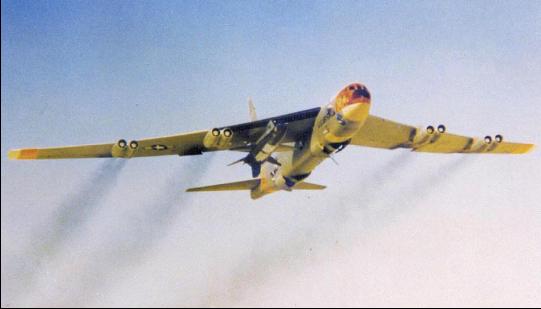 |
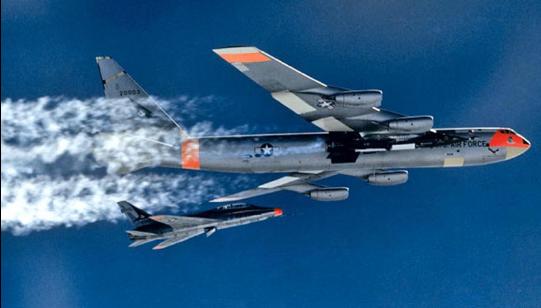 |
|||
The B-52's landing gear finishes retraction as it gains altitude. Armstrong Flight Research Center |
Preparing for X-15 launch with an F-100 chase plane standing by. North American Aviation |
|||
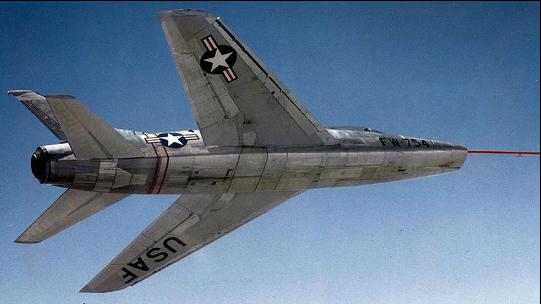 |
||||
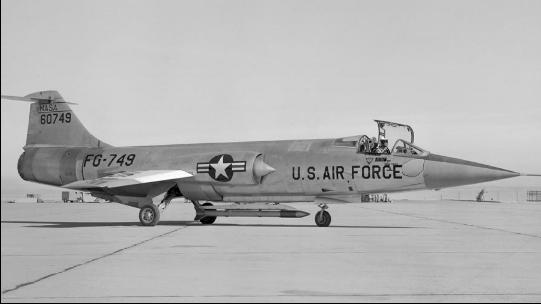 |
||||
The Lockheed F-104 Starfighter was the primary workhorse with 533 X-15 sorties. US Air Force |
The North American Aviation F-100 Super Sabre flew 67 times in support of the X-15. US Air Force |
|||
 |
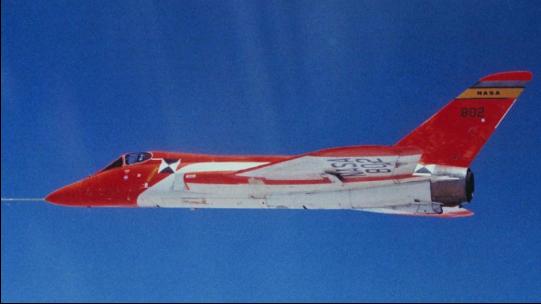 |
|||
The Northrop T-38 Talon flew 129 sorties as an X-15 chase plane. US Air Force |
The Douglas F-5D Skylancer was flown 11 times in X-15 chase plane duties. Armstrong Flight Research Center |
|||
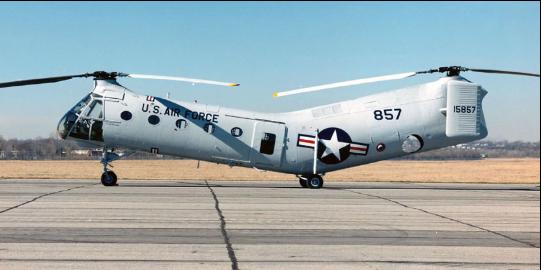 |
||||
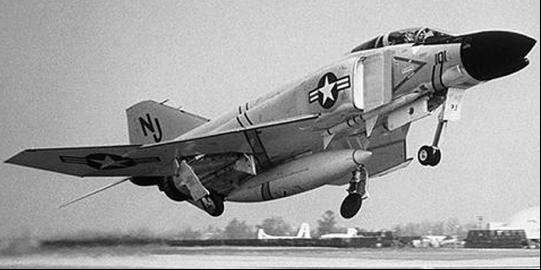 |
||||
The McDonnell F-4H Phantom II was used for a single X-15 chase aircraft sortie. US Air Force |
The Piasecki H-21 Workhorse supported nearly all X-15 flights. US Air Force |
|||
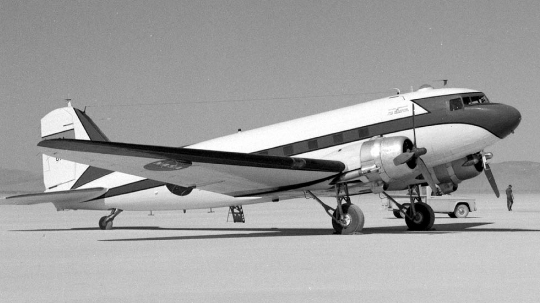 |
||||
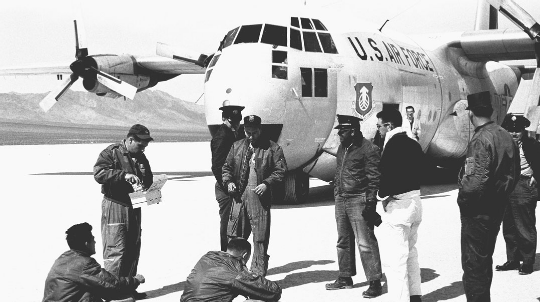 |
||||
The Douglas C-47 Skytrain, better known as the "Gooney Bird." Armstrong Flight Research Center |
The C-130A Hercules with X-15 support crews waiting at a remote lakebed site. Dave Stoddard collection |
|||